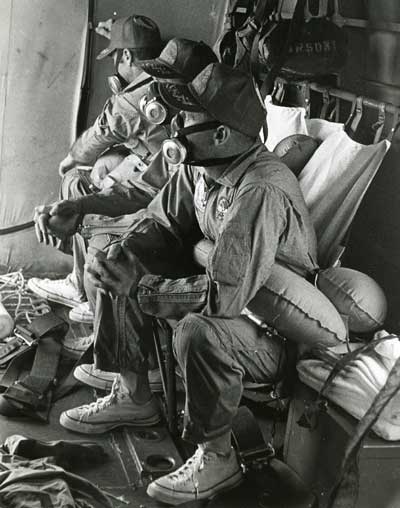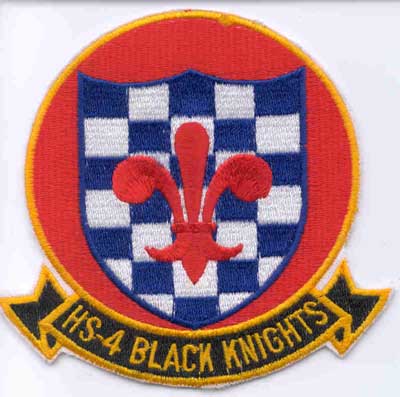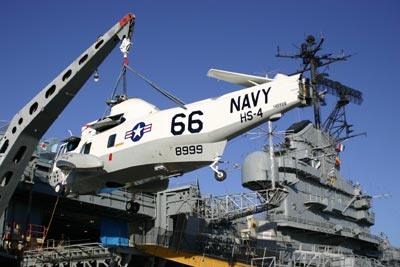Helo 66 revisitedby Dwayne A. Day
|
| My point was not that there are not some helicopters that are preserved in museums or known to some helicopter enthusiasts, but that there are none that have achieved the kind of fame that many fixed-wing aircraft have achieved. |
But sometimes the response can be surprising, in both negative and positive ways. Several articles that I thought were insightful and thought-provoking, like articles on the negative symbolism of human spaceflight, or the decline in macho language used to describe spaceflight (for example, “conquering” space), resulted in virtually no comments from readers. Probably the biggest surprise was the amount of positive response I received concerning an article about digging through the Ronald Reagan Presidential Library archival collection and stumbling upon a pro forma message of condolence about the Challenger accident—from Saddam Hussein. For some unfathomable reason I received a lot of comments about that, even though most of the article was about the monotony of archival research.
Now I can add to the list of surprises my little article about Helicopter 66, the Sikorsky Sea King helicopter that was used to recover many of the early Apollo crews (“The last flight of Helo 66”, June 25, 2007). The helicopter was lost at sea in a crash in 1975 that tragically claimed the life of its pilot. For some reason, that article resonated with a number of readers and drew a quite a few comments. Not a flood, certainly, but it clearly generated some interest and it is worth revisiting.
Bob Fish, the Apollo curator at the wonderful USS Hornet Museum in Alameda, California, wrote to me about the Sea King that is in their collection. He said that this particular aircraft was actually used in the movie Apollo 13, which is why it retains its markings from the helicopter carrier Iwo Jima. The helicopter was obtained from the Navy several years ago and lovingly restored off-site before being hoisted aboard the Hornet. The museum currently has to acquire two more Sea King rotor blades to finish their restoration (the Sea King has five blades). Fish also noted that the museum has several other helicopters that are painted like the recovery aircraft for the American space program, including a Piesecki HUP-25 Retriever of the type used to ferry John Glenn from the USS Noa to the carrier USS Randolph following his Friendship 7 orbital flight in 1962, and a UH-34 Seahorse of the type used for the Gemini and Apollo recoveries. Fish added that the SH-3 Sea King helicopter on display onboard the Hornet is BuNo 148999 (the Apollo-era “Helo 66” was BuNo 152711).
Several people who had flown in Sea Kings or read about them questioned my comment that the Sea King could not really float despite its boatlike hull. One noted that he had seen photographs of Sea King variants in the water in the only book that I know of dedicated to the American Sea King, H-3 Sea King in Action, by Al Adcock. That book does indeed show two different helicopters in the water, but in both cases their rotors are turning. It is my understanding that if the rotors stopped lifting their own weight while in the water, the helicopter could easily turn over. Certainly, without power the helicopter would soon turn sideways where it would be hit broadside by waves and roll over. Perhaps the helicopter could remain upright in totally calm water, but even this might be risky. I’m interested in hearing more input on this.
One reader noted that the big side door on the Sea King made it vulnerable to flooding in event of a water landing. He also noted that a Canadian Sea King that he flew in was equipped with emergency flotation bags in its sponsons to keep the helicopter upright if it came down in the water. I do not know if such flotation bags were normally installed aboard American Sea Kings, however.
Several other readers contacted me to dispute my claim that “there are no famous helicopters.” One sent me an article about the US Army helicopter known as “Queer John,” an OH-6 “Loach” that crashed seven (yes, seven!) times during its Vietnam career. Another wrote me about a famous British helicopter, “Humphrey,” which flew during the Falklands War and is preserved in a museum. He says that Humphrey is well-known within Great Britain. I will admit to not hearing of either of these helicopters before, even though I am a helicopter buff. My point was not that there are not some helicopters that are preserved in museums or known to some helicopter enthusiasts, but that there are none that have achieved the kind of fame that many fixed-wing aircraft have achieved. If you polled the general public and asked them to name a famous airplane, certainly most of them would draw a blank, but at least some of them would mention the Wright Flyer, the Spirit of St. Louis, the Spruce Goose, or even Burt Rutan’s Voyager that flew around the world. But ask them to name a famous helicopter and they would undoubtedly find it hard to do so. In fact, if you travel to Washington, DC and visit the National Air and Space Museum, you will not find any helicopters hanging in the museum’s main Milestones of Flight gallery.
 Apollo 12 astronauts aboard Helo 66 after their recovery and on their way to the Hornet. (credit: USS Hornet Museum) |
There are certainly many obvious reasons for this lack of fame, including the fact that helicopters are generally slow, not breaking any of the speed or endurance records that normally grab public attention. After all, airplanes are the fastest terrestrial vehicles created by man, whereas most helicopters can be outrun by very fast cars. Translation: helicopters lack sex appeal. Their technology has also lagged behind airplanes as well.
But there is also a certain chauvinism involved in helicopter aviation. Whereas numerous fixed wing naval aviators have made admiral in the US Navy, only one helicopter pilot has done so, Don Jones, who died eighteen months ago and happens to have been one of the Apollo recovery pilots. Within the US military, particularly the Army, helicopters can be flown by non-commissioned officers, implying that they are somehow lesser aircraft with lower skill requirements than fixed-wing airplanes. In fact, the opposite is true, and helicopters require more skill and attention than airplanes: a plane that loses an engine won’t immediately fall out of the sky and can glide for many miles looking for a landing spot, but a helicopter that loses power is headed straight down, fast, and requires much skill to land intact. Within the civilian world, helicopter pilots are often treated like truck drivers, whereas fixed wing pilots are paid more and better treated by their employers. Face it, helicopters have an image problem.
| But there is also a certain chauvinism involved in helicopter aviation. Face it, helicopters have an image problem. |
The US Navy has now retired virtually all of its Sea Kings. Three that were flying in Hawaii for the Pacific Missile Range Facility in Kauai were recently withdrawn from service. Two of these went to museums and the third is now standing at the gate to the Barking Sands missile facility. President Bush is still ferried around in a version known as the VH-3, which will be retired in a few years. In addition to numerous Navy variants, there have been several other variants of the basic Sikorsky S-61 design, including the H-3C and H-3E Jolly Green Giant used by the US Air Force as search and rescue aircraft, and the HH-3F Pelican used by the Coast Guard. These versions were plumper and had less elegant lines than the Sea King, however. They have been retired from service in the United States.
But the Sea King still continues in service in a number of foreign militaries around the world, including Canada, India, Great Britain, Italy, and Japan. Westland produced over 300 of the aircraft for the British and foreign militaries, and Augusta produced quite a few for Italy. Mitsubishi produced Sea Kings for the Japanese Maritime Self Defense Force.
Several experimental variants were developed, including what this author considers some of the coolest-looking helicopters ever. These include the S-72, which used the flight systems from an S-61 but a new fuselage. In one configuration, the second prototype S-72 flew as the Rotor Systems Research Aircraft equipped with wings, a large four-bladed rotor, and two large turbojet engines mounted on either side of its fuselage. It could be flown as a fixed wing aircraft, a helicopter, or both. Sikorsky also funded the sleek S-67 Blackhawk variant (not to be confused with the UH-60 Blackhawk), which used the flight components of an S-61 and had a thin fuselage and wings. It struck a sleek profile, but the US Army was not interested in it and the aircraft crashed during high-speed maneuvers. The S-72 and the S-67 had coolness in spades, but they too never achieved fame and glory.
 Patch for Helicopter Squadron 4, which conducted many of the Apollo spacecraft recoveries. (credit: USS Hornet Museum) |
The Sea King does continue in civilian service. The S-61N has been popular for servicing oil rigs and is capable of carrying up to twenty-five passengers. One reader wrote to note that Haverfield Corporation of Pennsylvania, which operates helicopters for various purposes including inspecting power lines, recently purchased an S-61, which had apparently been a Sea King in US Navy service. Haverfield has developed composite rotor blades to improve the performance of its helicopters.
Another reader noted that as a kid he had an Airfix model kit of the Sea King. I too had one of these and it was one of the toys that haunted me as a child. It was one of the first model kits that I tried to assemble. But my efforts at gluing and painting were so bad that I gave up on it before it was finished and left it in the box. Once a year or so I would take it out and look at it and decide that my model building skills were so hopeless that it was not worth trying. I was too dumb to realize that all good model builders start out as bad model builders.
Fortunately, as an adult, I can now buy a die cast model painted like the famed Helo 66. It sits above my desk and when the office door is closed, I give its rotor a spin and imagine what that big white bird must have looked like to astronauts returning from the Moon. It must have looked like an angel.
Acknowledgement: Special thanks to Bob Fish of the USS Hornet Museum for use of the photos.
